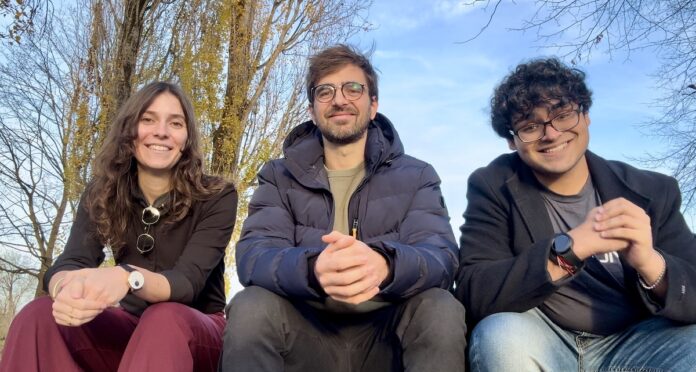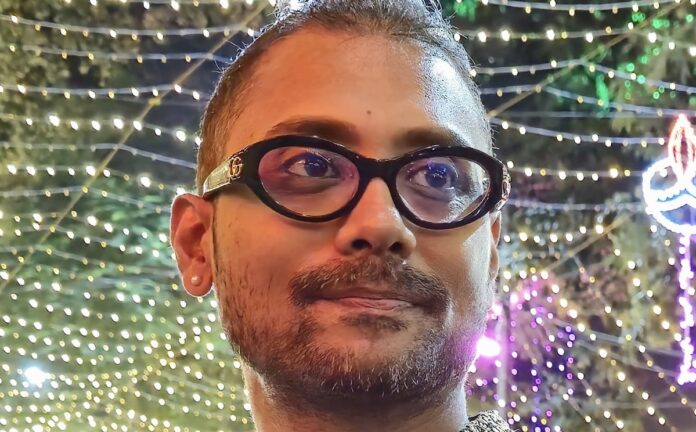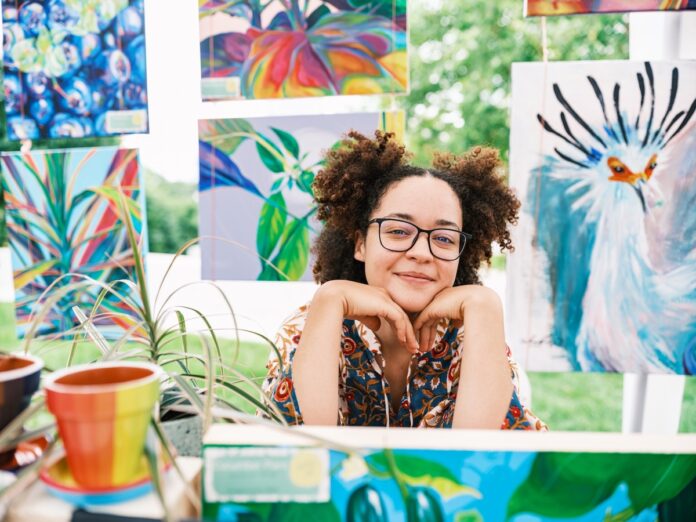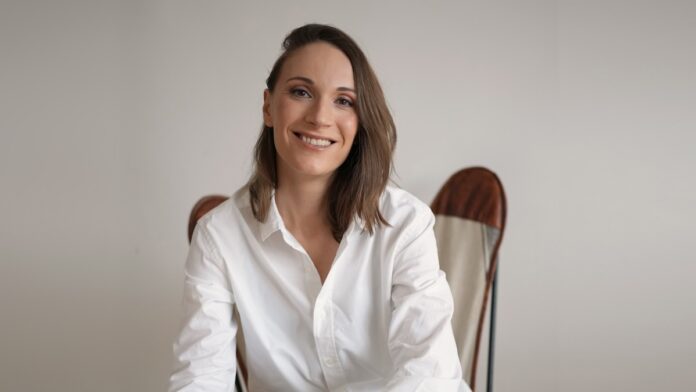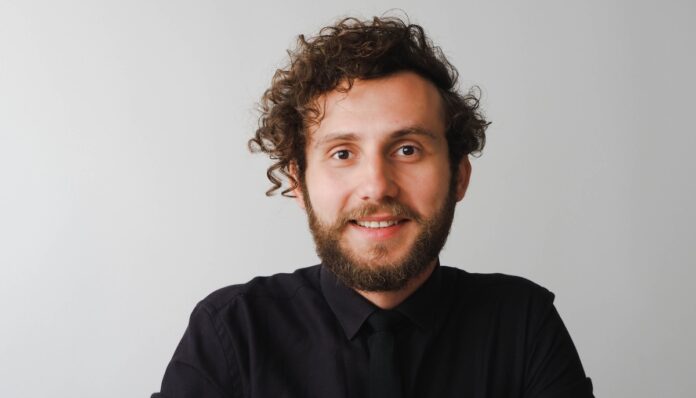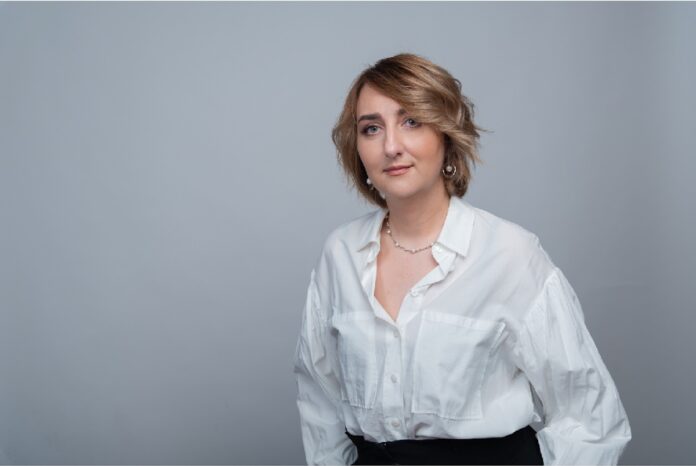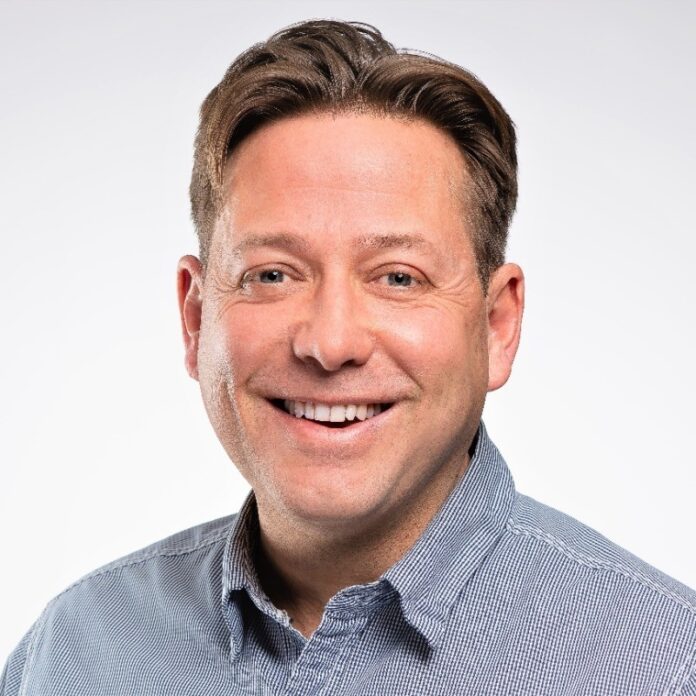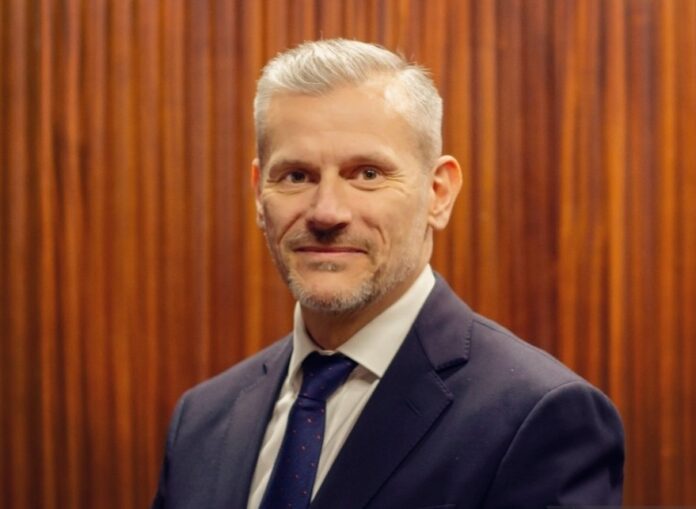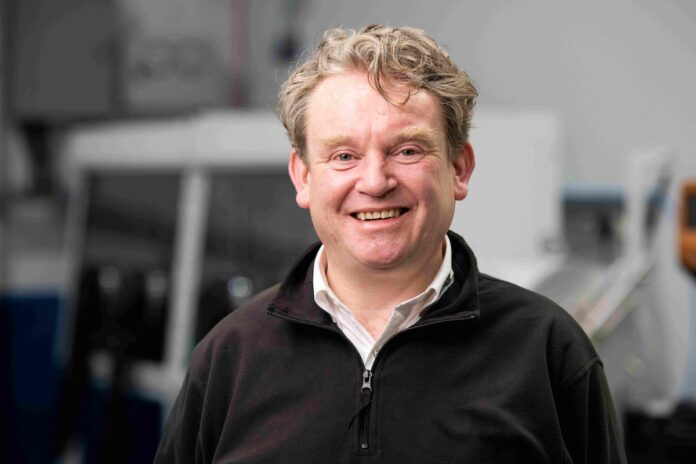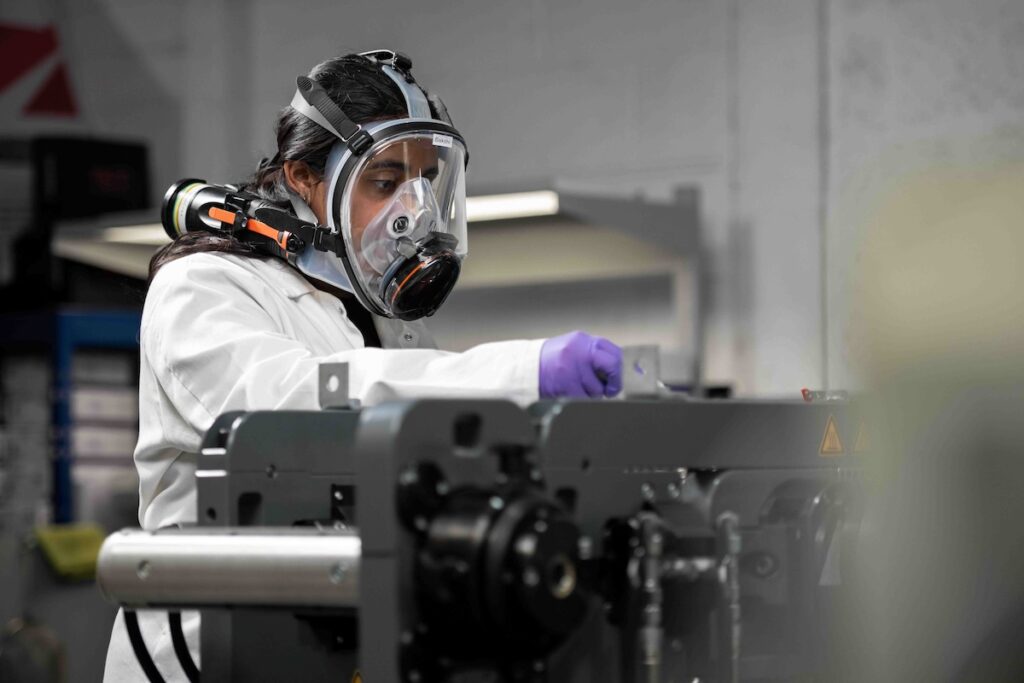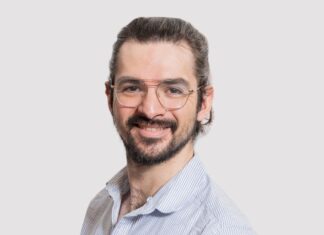Symbioverse is a climate-focused startup developing data-driven regenerative agriculture systems and is part of the Pioneers Club ecosystem in Germany
How did the “Symbioverse initiative” begin and who are the key people driving this mission?
Symbioverse grew out of twenty years of work at the intersection of plant stress physiology, soil science and field phenotyping across India, Israel and Germany. I spent my academic career studying how crops survive drought and heat, and how to design rigorous field trials to measure those responses.
The turning point was watching two crises unfold in parallel: on one side, European vineyards losing harvests to heatwaves and drought; on the other, smallholder farmers in Southern Africa facing chronic food insecurity on exhausted soils. This is how the idea came to our mind, if we built the right engine and the right coalitions, and combine deep agronomy, data and rigorous experimentation– we could serve both the causes.
Symbioverse was created as a hybrid initiative:
ampeloGhor, flagship project of our forprofit arm, is a “regenerative viticulture operating system” for European vineyards. It combines multisource soil, plant and climate data with a proprietary Regenerative Engine to design vineyardspecific regenerative programs. We have registered our forprofit arm as Symbioverse UG at Neumarkt in der Oberpfalz, Bavaria, Germany, on December 2025.
Our nonprofit arm adapts the same engine to smallholder communities, initially in Southern Malawi and Amazonedge communities in Colombia (sooner/later extending to other parts of Africa and Amazon forest), focusing on soil restoration, crop diversification and nutrition.
A small, complementary core team drives this work:
Dr. Ahan Dalal (he/they) – Founder & CEO, crop scientist and climatetech venture builder, responsible for scientific direction, venture strategy and fieldtrial design.
Gloria A. A. Rodríguez (she/they) – Design and content lead with a background in sustainable development, responsible for communitycentred design, storytelling and our Latin American partnerships.
Our AI engineer – an experienced machinelearning practitioner in bioengineering who is cobuilding the Regenerative Engine and data infrastructure.
We are supported by advisors in bioinformatics and remote sensing, and by institutional partners in Europe and Africa who provide access to vineyards, smallholder communities and independent labs.
What longterm vision does Symbioverse pursue and how do you aim to create climate resilience on a global scale?
Our longterm vision is to turn working landscapes–starting with vineyards and smallholder farms–into living, climatepositive ecosystems that can withstand extremes while feeding people and preserving cultural heritage.
On the viticulture side, our 2040 horizon is to serve roughly 15% of European vineyards–around half a million hectares representing €18–20 billions of annual wine production–with a regenerative viticulture operating system that stabilises yields and quality under climate stress while turning soils into net carbon sinks.
On the smallholder side, the vision is to support tens of thousands of hectares managed by farmers who currently face hunger and climate risk, so that they can double staple yields, diversify crops and build soil carbon instead of losing it.
Practically, we build climate resilience through three levers:
Living soils as infrastructure – Our Regenerative Engine consistently prescribes combinations of cover crops, compost, biochar and microbial inoculants that increase soil organic carbon, waterholding capacity and biological activity. We conservatively expect around 2 tCO₂e/ha/year of net soil carbon sequestration plus reduced fertiliserrelated emissions when the system is fully adopted.
Yield stability instead of boom–bust cycles – In smallholder systems we target at least 20–30% yield increases in the first regenerative seasons, with further gains over time, while in vineyards we focus on stabilising yields and grape quality under extreme years rather than maximising tonnes.
A shared engine, localised programs – The same Regenerative Engine serves both a heritage vineyard in Tuscany and a maize field in Southern Malawi, but every prescription is sitespecific and codesigned with local partners. This creates an evergrowing, crosscontinental dataset of “what works where”, which improves resilience recommendations over time.
We do not aim to own every hectare ourselves. The longterm strategy is to harden the engine and methods in our own pilots, then scale impact through partnerships with universities, cooperatives, regional programs and, eventually, carefully structured technology licensing under strong IP protection.
Which communities and stakeholders benefit most from your work and how do you ensure their needs are truly reflected in your solutions?
Three groups benefit most directly:
Heritage vineyards and winegrowing communities in Europe – Many of these vineyards face rising heat, water stress and disease pressure, with harvest volatility threatening both livelihoods and longstanding wine cultures.
Smallholder farmers and their families in Southern Malawi and other African contexts – Communities where average farm sizes are ~0.4 ha, maize yields around 1 t/ha, and child malnutrition is structurally high.
Emerging forestedge and Amazonadjacent communities in Latin America – where soil restoration and forest conservation need to be aligned with viable local livelihoods.
Beyond farmers, our work also supports local labs, universities and extension services who gain robust field datasets and new research questions, as well as investors and funders seeking measurable climate and social outcomes.
We make sure their needs drive the work through:
Baseline listening and diagnosis – Every engagement starts with structured interviews and a detailed baseline: soils, crops, yields, water access, financial constraints and social priorities (for example, nutrition for children or preserving a particular wine style).
Codesign, not topdown transfer – Prescriptions from the Regenerative Engine are always discussed and adapted with growers, women farmers, local agronomists and, where relevant, health workers. We explicitly check affordability, labour requirements and cultural fit before implementation.
Feedback loops with shared metrics – We measure outcomes (soil carbon, yields, crop quality, in some cases nutrition indicators) with thirdparty labs and share results with communities. That gives farmers a concrete basis to negotiate and to shape the next iteration.
In short, the Regenerative Engine provides the scaffolding, but community priorities decide the final design.
What makes your approach unique, especially the combination of sciencebacked methods and indigenous knowledge?
Several elements differentiate Symbioverse:
A fullstack service, not a gadget – Our “product” is a complete regenerative management program: diagnostics, AIbased prescription, local production of inputs, field implementation and monitoring, rather than a single device, app or offtheshelf input.
A proprietary Regenerative Engine with a growing data moat – We fuse multisource farm, lab and climate data into a proprietary decision layer that outputs sitespecific regenerative “recipes” for soils and crops. The architecture, algorithms and schemas are treated as confidential knowhow and database IP; we only disclose highlevel functionality publicly.
Indigenous and scientific knowledge on equal footing – In Malawi and other smallholder contexts, we explicitly treat local and Indigenous practices as firstclass data: soil and watersaving methods, seed selection traditions, and community governance are captured and used by the engine alongside lab metrics and scientific literature. Prescriptions are then codesigned with farmers and elders, not imposed.
A hybrid model with crosslearning – The same engine serves both highvalue vineyards in Europe and lowincome farmers in Africa. Technical innovations from one side–say, a new biochar–compost blend–can be adapted to the other, while social innovations from smallholder communities–like womenled seed banks–inform how we work with European growers.
Underneath, we are very conservative about claims: the agronomic practices we use (cover crops, compost, biochar, agroforestry) are well documented; the innovation lies in integrating them, optimising them with data and making them practical for each context.
What major challenges have you faced in building this initiative and how have you addressed them so far?
We have faced four main challenges:
Complexity vs usability – It is easy to build a complex AI model; much harder to turn that into a onepage, seasonal playbook a farmer can actually use. We address this by keeping the engine in the background and investing heavily in plainlanguage, visually clear field protocols, codesigned with growers and refined after every season.
Building a deeptech engine with a very small team – Integrating heterogeneous soil, plant and climate data into a single decision layer is technically demanding, and advanced modelling capacity is a bottleneck.
We have mitigated this by bringing in a dedicated ML engineer, forming collaborations with remotesensing and bioinformatics experts, and focusing our first pilots on a manageable scale (~150 ha) to grow the dataset methodically.
Protecting IP while fundraising and communicating – Our AI engine and proprietary dataset are core assets. Publicly oversharing the technical architecture or data structures would damage future IP options. We therefore follow a layered IP strategy: keeping algorithms and data as trade secrets and database IP, while discussing only surfacelevel functionality in public decks and interviews, and exploring targeted patent filings once we are ready.
Aligning hybrid funding for forprofit and nonprofit arms – Vineyards can pay for services; smallholder communities cannot. We have responded by designing a hybrid financing stack: preseed equity and revenue from European vineyards, plus grants and climateimpact funding for African and Amazonian programs. Our current priority is raising roughly €300k preseed and securing nondilutive funds to launch paired pilots in EU vineyards and Southern Malawi.
These constraints have forced discipline: we build only what is needed for the next level of field validation and climate impact, not for slideware.
How do your six interconnected innovation tracks work together to support ecosystem restoration?
Symbioverse was structured from the beginning as six interlocking tracks that function like an ecosystem rather than separate departments:
Scientific research and evidence – Partnerships with universities and labs in Europe and Africa to design rigorous field trials, measure soil and crop responses, and publish independent evidence.
Technology and AI – Development of the Regenerative Engine, data fusion layer and decision logic, all kept proprietary and continuously retrained on field outcomes.
Regenerative viticulture programs (ampeloGhor) – Implementation of vineyardfocused operating systems across Italy, France, Spain, Greece and Germany to restore soils, stabilise yields and unlock carbon revenue.
Smallholder and forestedge programs – Nonprofit pilots in Southern Malawi and, in preparation, Colombia/Amazon, focused on soil restoration, crop diversification and nutrition.
Community capacity and knowledge – Training farmers (with a strong focus on women and queers), extension workers and local youth in regenerative practices, monitoring and basic data collection, so knowledge stays in the community.
Climate finance and markets – Designing measurement frameworks and partnerships for soilcarbon credits and outcomebased funding, initially for vineyards and later for smallholders, ensuring that restored ecosystems translate into economic resilience.
Data and insight flow continuously between these tracks: field programs generate data that feeds research and AI; research sharpens prescriptions; community capacity ensures adoption; climate finance keeps regenerative practices economically viable. Together they form a single restoration engine rather than six separate projects.
What role do farming communities play in cocreating the solutions you develop?
Farming communities are not our “beneficiaries”; they are codesigners and, in many cases, coresearchers.
In Southern Malawi, we work with villages, women’s and queers’ groups, and local extension officers to define priorities (food security, nutrition, soil erosion) and then codesign regenerative cropping patterns, including which crops and trees are acceptable, when to plant, and how labour is organised. Farmers help select trial plots, participate in data collection and interpret the results with us after harvest.
In European vineyards, we treat managers and workers as longterm partners. They decide which blocks to convert first, how much risk they can tolerate in a given season, and which aspects of grape quality are nonnegotiable. Our prescriptions are adapted to these constraints, and vineyard teams provide feedback into the engine after each season.
We deliberately design programs where growers have skin in the game – coinvestment, comeasurement and, eventually, coownership of local cooperatives or carbon projects–so that regenerative practices outlive any single grant or project cycle.
Which future developments or expansions are you currently planning for the Symbioverse initiative?
Three expansion arcs are in focus:
Phase1 pilots and data hardening (next 18–24 months) – Implement our first fullscale pilots on roughly 150 hectares: about 50 ha of European vineyards and 100 ha of smallholder cropland in Southern Malawi, with paired plots, independent soil labs and yield measurement to bring the Regenerative Engine to TRL 6.
Scaling within our two core geographies (3–5 years) – Expand ampeloGhor across 10–20 thousand hectares of vineyards with a mix of private estates, cooperatives and university vineyards, while growing our smallholder program to a few thousand hectares and thousands of farmers across Malawi and neighbouring countries. Carbonmeasurement and outcomebased finance will be embedded from the outset.
A third pillar around forests and the Amazon (nonprofit) – In collaboration with Colombian universities and Amazonedge communities, we are scoping pilots focused on forestcompatible livelihoods: soil restoration under agroforestry, diversified crops around forest buffers, and protection of Indigenous knowledge. This will use the same Regenerative Engine but with different constraints and metrics.
Across all three, we are actively seeking:
University and research partners to codesign field trials and collaborative grant applications;
Vineyard partners (public, private and cooperative) willing to host pilots and share data;
Funders interested in blended finance–combining philanthropic capital for smallholders with catalytic preseed funding for the forprofit arm.
How do you ensure that collaborative innovation remains practical for communities working directly with ecosystems?
Our rule of thumb is simple: if a farmer cannot implement it with the tools, time and money they actually have, it is not a solution. We operationalise this in several ways:
Local inputs first – Prescriptions prioritise materials that can be produced or sourced locally: prunings and crop residues for biochar, local manure and wastes for compost, regionally available seeds and inoculants. Longdistance, highenergy inputs are the exception, not the norm.
Lowfriction data collection – We avoid dataheavy apps that require perfect connectivity. Most field data are collected via simple forms or by local partners; more complex analytics stay on our side of the system. Farmers receive decisions, not dashboards.
Oneseason, stepwise playbooks – Instead of overwhelming communities with a “total system change”, we design stepwise playbooks: what to do this season, with this budget and labour, to move one level up in soil health and resilience. Each step is evaluated before scaling.
Coownership of tradeoffs – Any prescription that increases labour or shortterm risk is negotiated. If a practice is agronomically ideal but socially or economically unworkable, we do not force it; we search for secondbest options that are actually adoptable.
By hiding complexity inside the engine and delivering simple, contextaware actions, we keep innovation grounded in the realities of the people who work the land.
What three pieces of advice would you give to other founders who want to build impactdriven or climatefocused ventures?
Anchor everything in realworld data, not just theory. Climate solutions live or die in the field, not in pitch decks. Design rigorous pilots, measure baselines and outcomes with independent partners. Be willing to update your thesis when the data contradict your assumptions.
Treat community trust and IP protection as equally strategic. You can and must protect your core IP–algorithms, datasets, methods–through trade secrets, database rights and targeted patents. But do it while being radically transparent and respectful with the communities you serve. They are not just “use cases”; they are partners whose knowledge and risks you are leveraging.
Design your funding architecture from day one. Climate ventures often need hybrid capital: grants, revenue, equity, sometimes carbon finance. Don’t assume a single VC round will solve everything. Map which parts of your impact model generate cash flows and which will always need concessional funding, and architect your structure accordingly.
You are part of the Pioneers Club. How does this environment support your work and your mission?
The Pioneers Club in Neumarkt in der Oberpfalz, Bavaria, Germany, is a curated ecosystem that brings together Mittelstand companies, startups, digital experts and creatives in a shared space. For Symbioverse, it provides three types of support:
A bridge to the real economy – Many of our potential partners are familyowned businesses, SMEs and impactdriven corporates, not just tech investors. The Pioneers Club sits exactly at that intersection, making it easier to translate a regenerativeagriculture vision into concrete collaborations with manufacturers, distributors or regional champions.
A testbed for narrative and strategy – Being in an environment where other founders and experienced operators challenge your assumptions is invaluable. It helped us sharpen our hybrid model (forprofit ampeloGhor and nonprofit arm) and stresstest our climate narrative against the expectations of European industry.
Visibility and legitimacy – Participating in Pioneers sprints and events gives a small climate venture from Neumarkt a platform far beyond its size–essential when we are looking to raise capital and recruit talent for a technically demanding mission.
We use all of them, but in practice three stand out:
The curated community – Having a concentration of founders, domain experts and Mittelstand leaders in one place means that a casual coffee can turn into a partnership conversation or an introduction to a vineyard owner or university lab.
The network and bridging function – Pioneers acts as a connector between startups and established companies in Bavaria and beyond. For Symbioverse, that has meant access to potential industrial partners, sustainability teams and climatefocused financiers that would have taken years to find alone.
Flexibility of space and format – As a distributed team working between Germany, Africa and Latin America, we need a physical base that can handle intense sprint weeks and quiet research phases. The coworking and meeting spaces, plus regular events, let us dial our presence up and down without losing connection to the ecosystem.
The physical desks are useful; the real value is the network that comes with them.
How does being surrounded by experts, events and 150 member companies help you expand the Symbioverse initiative?
For a venture like Symbioverse, expansion is not just about more hectares; it is about better partnerships. With the wide range of companies and regular expert events, Pioneers Club supports Symbioverse in three ways:
Faster learning cycles – We can sensecheck ideas with experts in data, hardware, finance and sustainability in days rather than months. That shortens the time from concept to tested pilot, whether we are discussing sensor partnerships for vineyards or dataprivacy questions around our proprietary dataset.
Pathways into new sectors and regions – Member companies often have operations or partners in wine, food, logistics, retail or development cooperation. Their networks open doors to vineyards, universities and NGOs that might host field trials in Europe, Africa or Latin America.
Credibility with funders and talent – Pioneers Club offers a system in which mentors and experts of the field provide regular feedback about our progress. By having these in our profile, it also creates credibility and shows that we are serious about execution and not only vision. That matters when we approach climatetech investors, apply for grants, or recruit AI and agronomy talent for a mission that is both scientifically demanding and deeply fieldbased.
Ultimately, environments like the Pioneers Club give a small, IPsensitive venture the support structure of a much larger organisation. It allows us to stay focused on what matters most: building living soils, resilient crops and datadriven pathways out of climate risk.
Image Credits: Soumyodeep Banik (Kolkata)
Thank you Dr. Ahan Dalal for the Interview
Statements of the author and the interviewee do not necessarily represent the editors and the publisher opinion again.
